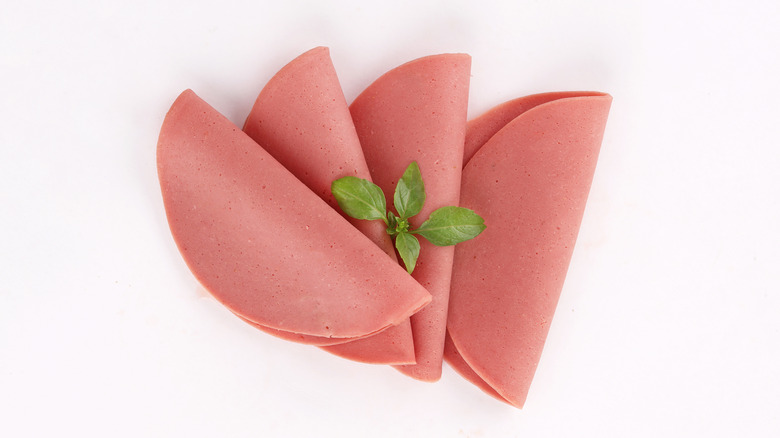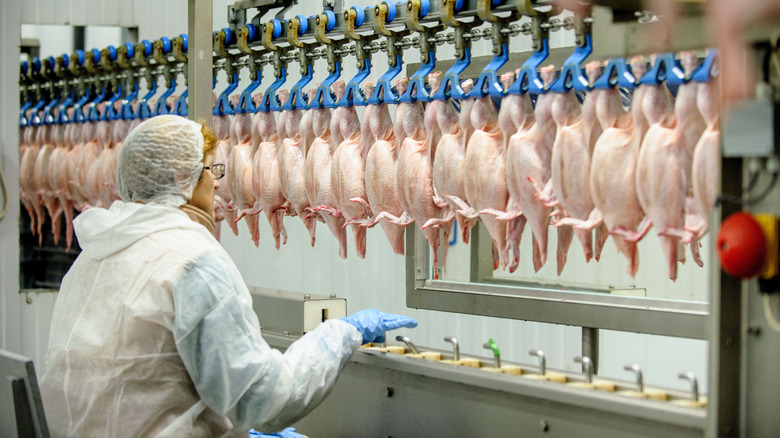You may have noticed turkey ham sitting in the deli aisle of your grocery store and thought to yourself: What in the world is that? At first glance, it makes about as much sense as a product labeled “chicken beef” or “salmon pork” — and besides, ham is legally required to be made with the thigh meat of a pig. But rest assured, turkey ham is made from turkey. Theres no pork in it.
Its a similar type of confusion as the kind associated with almond milk and other non-dairy milk alternatives. According to a 1976 New York Times report, turkey ham caused legal troubles with pork producers similar to the ones non-dairy milks have had with dairy companies today. Obviously, turkey ham was able to keep its name, or we wouldnt know it as such today. But turkey ham products are now required to include a subheading of “cured turkey thigh meat” as a result of those legal troubles — just to clarify exactly what it is.
Turkey ham has become a popular alternative to traditional pork ham, but its name causes confusion. With “ham” referring to pork, many wonder – is there actually pork in turkey ham? The short answer is no. Despite the misleading name, turkey ham contains no pork.
Turkey ham is made solely from turkey and undergoes a curing process to develop a ham-like flavor. But the use of the term “ham” sparked controversy in the 1970s. To end the dispute, companies must now label turkey ham as “cured turkey thigh meat.” While the name may be puzzling, rest assured real turkey ham is 100% pork-free.
In this article, we’ll cover everything you need to know about the ingredients in turkey ham, its flavor profile, nutritional value, and how it compares to pork ham. Let’s settle the debate once and for all on whether there is any pork in this alternate deli meat.
The Origins of Turkey Ham
Turkey ham was invented in the 1970s by Jennie-O, a major turkey company, in collaboration with food scientist Dr. Robert C. Baker. It was developed as a low-fat alternative to traditional ham made from pork.
The manufacturing process mirrors that of regular cured ham. Turkey thighs are deboned, injected with a curing brine, and smoked or cooked. The brine contains water, salt, sugars, phosphates, nitrites, and other ingredients to cure the meat.
While made from turkey, the curing and smoking processes impart a similar salty, smoky flavor as found in pork ham. The intent was creating a product that tasted like ham without using pork.
The “Ham” Controversy
By law, ham must come from the hind legs of pigs. Pork producers criticized the use of “ham” for a turkey product.
To resolve this turkey ham labels were required to include the statement “cured turkey thigh meat.” This aimed to clarify the contents while still allowing the familiar “ham” terminology.
Today, you may see it sold as just turkey ham or as turkey ham cured turkey thigh meat. But in either case, turkey ham contains no pork. Only turkey meat, water, and curing agents are used to produce the deli meat alternative.
Ingredients in Turkey Ham
Turkey ham typically contains the following
-
Turkey thigh meat – the base of the product.
-
Water – makes up 20-40% of the product. Keeps turkey ham moist.
-
Salt – for flavor and preservation
-
Sugar – balances saltiness and adds sweetness.
-
Sodium nitrite – curing agent that gives pink color.
-
Phosphates – improve moisture retention.
-
Smoke flavoring – mimics taste of traditional smoked ham.
No pork, beef, or other meats are present in turkey ham’s ingredients. The curing process gives it a similar salty, smoky, and slightly sweet flavor as pork ham without using any pork products.
Nutritional Profile of Turkey Ham
Turkey is a leaner meat than pork, so turkey ham is lower in fat and calories than pork ham. A 2-ounce serving provides:
- Calories: 60-80
- Protein: 7-10g
- Fat: 1-2g
- Sodium: 300-500mg
It’s an excellent source of protein. However, the curing process adds considerable sodium. Those limiting salt intake should consume turkey ham in moderation.
Overall, turkey ham can be part of a balanced diet. But like any processed meat, it should be eaten in smaller portions.
How Turkey Ham Compares to Pork Ham
While made from poultry instead of pork, turkey ham is designed to resemble traditional ham in taste and texture. Here’s how they compare:
Flavor – Turkey ham has a similar salty, smoky flavor but is mildly sweet with less robust pork notes. Adding smoked paprika boosts smokiness.
Texture – Turkey ham is a bit firmer and drier than fattier pork ham. Still, it has a dense, sliceable texture like deli meat.
Color – Curing gives turkey ham a light pink to deep red color compared to pork ham’s pinkish-mahogany hue.
Fat content – Turkey ham is significantly leaner, with 1-3g fat per serving versus 5-10g in pork ham.
Sodium content – On average, they contain comparable amounts of sodium, though this varies by brand.
Price – Turkey ham is usually slightly cheaper than comparable pork ham.
Despite small differences, turkey ham makes a suitable stand-in for pork ham in many recipes. Its lower fat content may require tweaks to prevent drying out.
Common Questions about Turkey Ham Ingredients
Turkey ham generates many questions about its contents and how it differs from pork ham. Here are some frequently asked questions:
Does turkey ham actually contain ham?
No. Turkey ham contains no pork products. The name “ham” refers to the flavor profile, not the meat source.
What part of the turkey does turkey ham come from?
Turkey ham is made from thigh meat, which is darker and fattier than breast meat. This gives it a richer flavor and texture.
Is turkey ham processed and unhealthy?
Turkey ham is a processed food with added sodium and preservatives. But in moderation, it can fit into a healthy diet, unlike some ultra-processed products.
How can you identify turkey ham products?
Look for the label “cured turkey thigh meat.” This confirms the product contains no pork and is made from cured turkey.
Does turkey ham taste like real ham?
Thanks to curing methods, turkey ham approximates the salty, smoky flavor of real ham. Subtle differences exist, but overall the flavors are comparable.
The Final Verdict
While the name may be misleading, turkey ham contains no pork. It’s made by curing turkey thigh meat in a brine solution, not from pork. The controversy over the name forced companies to clarify it’s made from turkey, not pork ham.
Apart from the meat source, turkey ham mimics the preparation of whole-muscle ham. So if you avoid pork for dietary, religious, or ethical reasons, turkey ham makes an excellent stand-in for sandwiches, breakfasts, and other uses. Just know that this faux “ham” is 100% pork-free.

What is turkey ham?

Turkey ham was invented by the national brand of turkey products Jennie-O in 1975 in collaboration with the influential agricultural scientist Robert C. Baker (whom the New York Times dubbed “chicken Edison” in 1984). Its a cured and sometimes smoked meat made from the upper leg of turkeys — aka turkey thighs. Youll find it sold either as deli slices or as a whole piece of meat, similar to how traditional ham is sold. Turkey ham is a processed food, fully cooked and ready to be eaten right out of the package.
Turkey ham is marketed as a healthy alternative to regular ham, with an emphasis on the difference between red and white meat. But although turkey ham can have a darker tinge to it relative to other white meat products, it still isnt considered red meat. Red meat is defined as any meat coming from mammals, while white meat includes poultry. Since turkey is poultry and not a mammal, turkey products will always be white meat regardless of what color they are after theyve been processed.
How is turkey ham made?

Since turkey ham is made to imitate the flavor and texture of regular ham, its prepared in a similar way. Ham can be prepared in many different ways, but the birds eye view of the process of making boneless ham is that its cured, smoked, or both.
For turkey ham, the turkey thigh meat is first deboned. Its then cured by injecting a mixture of salt, sugar, sodium diacetate, sodium erythorbate, sodium phosphate, sodium nitrite, potassium lactate, and water into the meat. Curing meat is a process of food preservation that dates back to 3,000 B.C. There are both wet and dry curing methods; dry curing meat involves rubbing a mixture of salt and seasonings on the outside of the meat, while wet curing, though similar, adds water to make a brine. Turkey ham uses a wet method, as does traditional ham. The turkey is submerged in the brine and left to rest for several hours; afterward, the meat is cooked, completing the cure.
